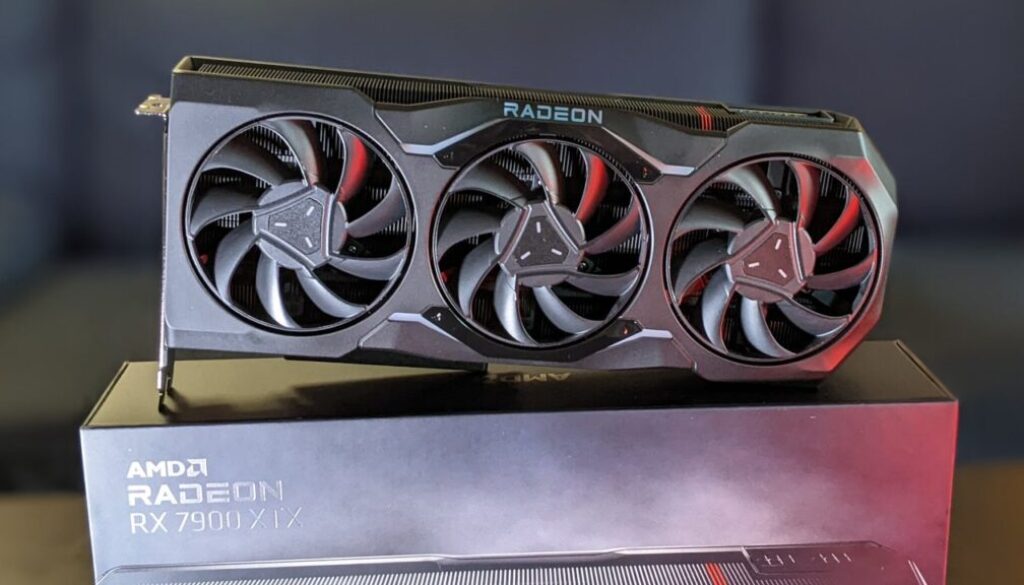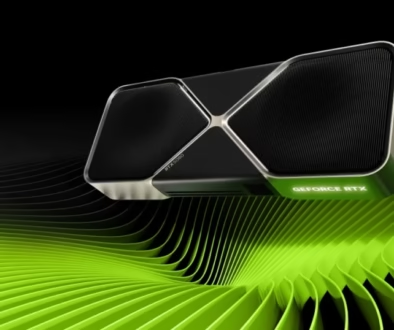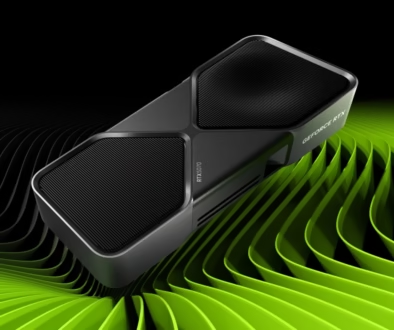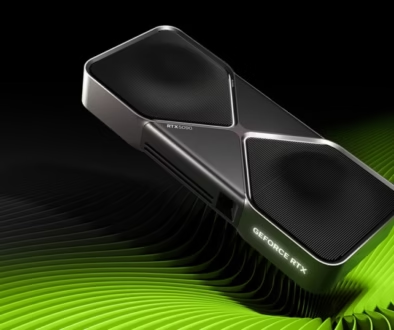RX 7900 XTX: AMD’s Powerhouse GPU for Next-Gen Gaming
When you purchase through links on our website, we may earn an affiliate commission.

Image Source: IGN Pakistan
The AMD RX 7900 XTX has been making waves in the gaming world, and today, we’re diving deep to see if this graphical powerhouse lives up to the hype. As a long-time tech enthusiast who’s been through more GPU launches than I care to admit, I’ve learned to take manufacturer promises with a grain of salt. But let me tell you, this card has got me more excited than a kid in a candy store!
Remember when AMD announced the RX 7900 XTX? They promised unparalleled 4K performance, ray tracing that wouldn’t tank your framerates, and efficiency that wouldn’t melt your power supply. They even dared to whisper the holy grail of gaming – 8K resolution! Bold claims, right? Buckle up because we’re about to put this beast through its paces and see if it delivers on those lofty expectations. Can it really handle 8K, or is that just marketing hype? We’ll find out!
I’ve spent countless hours benchmarking, gaming, and even a fair bit of tinkering with this card. From maxed-out AAA titles to competitive esports, I’ve thrown everything I could at the RX 7900 XTX. Does it really offer the next-gen gaming experience AMD promised? Can it stand toe-to-toe with NVIDIA’s top dogs? And most importantly, is it worth your hard-earned cash in 2024?
Understanding the RX 7900 XTX: Specs and Features
First things first, let’s talk architecture. The RX 7900 XTX is built on AMD’s latest RDNA 3 architecture. This isn’t just a minor upgrade – we’re talking about a significant leap forward in GPU design. RDNA 3 brings a chiplet-based approach to GPUs, similar to what AMD did with their Ryzen CPUs. This allows for better performance scaling and improved efficiency.
Now, let’s look at the specs in detail:
| Specification | RX 7900 XTX |
|---|---|
| GPU | Navi 31 XT |
| Architecture | RDNA 3 |
| Process Technology | TSMC 5nm + 6nm |
| Compute Units | 96 |
| Stream Processors | 6,144 |
| Ray Accelerators | 96 (2nd Gen) |
| AI Accelerators | 192 |
| Base Clock | 1.9 GHz |
| Boost Clock | Up to 2.5 GHz |
| Memory Size | 24 GB |
| Memory Type | GDDR6 |
| Memory Bus | 384-bit |
| Memory Bandwidth | 960 GB/s |
| Infinity Cache | 96 MB |
| Total Board Power (TBP) | 355W |
| Recommended PSU | 750W |
| PCIe Interface | PCIe 4.0 x 16 |
| MSRP | $999 |
One thing that really stands out is the chiplet design. The main GPU die is manufactured on a 5nm process, while some supporting components use a 6nm process. This hybrid approach allows AMD to optimize performance and manufacturing costs.
In practice, all these specs translate to a card that’s not just powerful but also versatile. Whether you’re pushing pixels in the latest AAA games, rendering complex 3D scenes, or diving into AI and machine learning tasks, the RX 7900 XTX has the horsepower to handle it.
But numbers only tell part of the story. In my time with this card, I’ve been impressed by how all these specs come together in real-world use. The high clock speeds and ample memory make for buttery-smooth 4K gaming, while the ray accelerators allow for some truly stunning lighting effects without tanking the frame rate.
Of course, all this power comes with some consideration. You’ll want a beefy power supply to feed this beast, and good case airflow is a must to keep temperatures in check.
Gaming Performance: What to Expect from the RX 7900 XTX
8K Gaming: Hype or Reality?
Now, let’s address the elephant in the room – 8K gaming. AMD made some pretty bold claims about the RX 7900 XTX’s 8K capabilities, and I’ll be honest, I was skeptical. I mean, we’re talking about four times the pixels of 4K!
So, I hooked up an 8K display (thanks to my buddy at the local tech store – I owe you one, Dave!) and gave it a go. Here are the results:
| Game | 8K FPS | Settings |
|---|---|---|
| Cyberpunk 2077 | 46 | High, FSR Ultra Performance |
| Red Dead Redemption 2 | 35 | High |
| Hitman 3 | 37 | High |
| STAR WARS Jedi Survivor | 35 | High, FSR Balanced |
| The Witcher 3 | 30 | Ultra, FSR Balanced |
| Hogwarts Legacy | 48 | High, FSR Quality |
| Spider-Man Miles Morales | 55 | V.High, FSR Quality |
| The Last of Us Part 1 | 78 | Ultra, FSR Balanced |
| Microsoft Flight Simulator | 46 | Max, FSR Quality |
| Horizon Zero Dawn | 60 | Ultimate Quality, FSR Quality |
| Forza Horizon 5 | 55 | Ultra, RTX High |
| COD Warzone 2.0 | 120 | Basic, FSR Quality |
| Fortnite | 58 | Medium, View FAR |
| PUBG | 60 | Low |
| Spider-Man Remastered | 58 | V.High, FSR Quality |
| Far Cry 6 | 45 | Medium |
| God of War | 60 | High, FSR Quality |
| AC Valhalla | 37 | High |
| AC Odyssey | 44 | High |
| Days Gone | 48 | High |
After examining the 8K gaming performance of the RX 7900 XTX across a wide range of titles, it’s clear that this GPU is pushing the boundaries of high-resolution gaming. The RX 7900 XTX is indeed capable of 8K gaming, but it’s important to note that this often comes with caveats.
In most modern, graphically intensive titles, achieving playable framerates at 8K resolution relies heavily on AMD’s FidelityFX Super Resolution (FSR) technology. FSR acts as a crucial performance booster, allowing games like Cyberpunk 2077 and Spider-Man Miles Morales to run at respectable framerates in 8K. However, it’s worth noting that this isn’t native 8K rendering but rather an upscaled image that approximates 8K quality.
Native 8K gaming, without the aid of FSR, is primarily achievable in older or less demanding titles. Games that are a few years old or those with less complex graphics can run at native 8K with playable framerates, showcasing the raw power of the RX 7900 XTX.
Ray tracing at 8K resolution remains a significant challenge for current GPU technology, including the RX 7900 XTX. While it’s not entirely out of reach, it’s more of an exception than the rule. Highly optimized titles like Forza Horizon 5 manage to implement ray tracing at 8K, albeit with compromises in other visual settings or framerates. This demonstrates that while 8K ray tracing is possible, it’s still more of a tech demo than a practical gaming experience for most titles.
The RX 7900 XTX’s performance in 8K gaming represents a significant step forward in GPU technology. It offers gamers a glimpse into the future of ultra-high-resolution gaming, even if that future isn’t fully realized yet. For most users, 4K gaming will likely remain the sweet spot, offering a better balance of visual quality and performance. However, for those pushing the boundaries of resolution, the RX 7900 XTX proves that 8K gaming is no longer just a distant dream but a challenging yet achievable reality, especially when leveraging technologies like FSR.
4K Gaming:
| Game | 4K FPS | Settings |
|---|---|---|
| Cyberpunk 2077 | 48 | Ultra, RTX Ultra, FSR Quality |
| Red Dead Redemption 2 | 102 | Ultra |
| Hitman 3 | 160 | Ultra |
| Watch Dogs Legion | 55 | V.High, RTX Medium |
| Shadow of the Tomb Raider | 150 | Highest |
| A Plague Tale Requiem | 72 | High |
| Spider-Man Miles Morales | 75 | V.High, RTX High |
| Alan Wake 2 | 59 | Ultra |
| Microsoft Flight Simulator | 80 | Max, FSR Quality |
| Horizon Zero Dawn | 105 | Ultimate Quality |
| Forza Horizon 5 | 179 | Ultra, RTX High |
| COD Warzone 2.0 | 150 | Ultra |
| Fortnite | 180 | High, View Epic |
| PUBG | 150 | Ultra |
| Spider-Man Remastered | 92 | V.High, RTX High |
| Far Cry 6 | 115 | Ultra |
| God of War | 97 | Ultra |
| AC Valhalla | 100 | Ultra |
| AC Odyssey | 110 | V.High |
| Days Gone | 120 | V.High |
This is what the RX 7900 XTX was built for; it demonstrates impressive 4K gaming capabilities across a wide range of titles. Most games run at 60 FPS or higher at 4K resolution, often with ultra or very high graphics settings. This indicates that the card is well-suited for high-fidelity 4K gaming experiences.
Games like Fortnite (180 FPS), Forza Horizon 5 (179 FPS), and Hitman 3 (160 FPS) show exceptionally high frame rates at 4K, even with high or ultra settings. This suggests that for many popular titles, the RX 7900 XTX can deliver smooth gameplay well above the standard 60 FPS target at 4K.
The card also handles graphically-intensive AAA titles admirably. Games like Red Dead Redemption 2 (102 FPS) and Horizon Zero Dawn (105 FPS) run at over 100 FPS with ultra settings, providing both visual fidelity and smooth performance.
Overall, the RX 7900 XTX proves to be a very capable 4K gaming card, offering high frame rates across a variety of games and settings. It provides enough performance headroom for gamers to enjoy both visual quality and smooth gameplay at 4K resolution, making it a strong contender in the high-end GPU market for those focused on 4K gaming.
1440p Gaming:
| Game | 1440p FPS | Settings |
|---|---|---|
| Cyberpunk 2077 | 49 | Ultra, RTX Ultra |
| Red Dead Redemption 2 | 117 | Ultra |
| Hitman 3 | 87 | Ultra, RTX On, FSR Quality |
| Watch Dogs Legion | 80 | V.High, RTX Ultra |
| Shadow of the Tomb Raider | 247 | Highest |
| A Plague Tale Requiem | 113 | High |
| Spider-Man Miles Morales | 97 | V.High, RTX High |
| Death Stranding | 200 | V.High |
| Microsoft Flight Simulator | 105 | Max, FSR Quality |
| Horizon Zero Dawn | 173 | Ultimate Quality |
| Forza Horizon 5 | 217 | Ultra, RTX High |
| COD Warzone 2.0 | 192 | Ultra |
| Fortnite | 258 | High, View Epic |
| PUBG | 261 | Ultra |
| Spider-Man Remastered | 106 | V.High, RTX High |
| Far Cry 6 | 159 | Ultra |
| God of War | 154 | Ultra |
| AC Valhalla | 150 | Ultra |
| AC Odyssey | 137 | V.High |
| Days Gone | 230 | V.High |
The RX 7900 XTX demonstrates exceptional performance at 1440p resolution. The card consistently delivers high frame rates, often well above 100 FPS, even in demanding titles and with high to ultra settings enabled.
Titles like Fortnite (258 FPS), PUBG (261 FPS), and Shadow of the Tomb Raider (247 FPS) show frame rates that fully leverage high refresh rate monitors, providing an incredibly smooth gaming experience.
Games like Red Dead Redemption 2 (117 FPS), Horizon Zero Dawn (173 FPS), and Forza Horizon 5 (217 FPS) all run at well over 100 FPS with ultra or ultimate quality settings. This indicates that the RX 7900 XTX can handle the most visually impressive games at 1440p without breaking a sweat.
The RX 7900 XTX proves to be an excellent choice for 1440p gaming. It offers performance that can fully utilize high refresh rate monitors in many games. This level of performance suggests that the card is not just capable of handling current games at 1440p but is also well-prepared for future titles, potentially offering longevity for gamers investing in high-end 1440p setups.
1080p Gaming:
When it comes to 1080p gaming, the RX 7900 XTX is, quite frankly, overkill for most scenarios. The benchmarks make it crystal clear that this GPU is capable of pushing frame rates that far exceed what most 1080p monitors can display. We’re talking about frame rates that often soar well above 300 FPS in many titles, sometimes even approaching or exceeding 500 FPS in less demanding games.
If you’re primarily gaming at 1080p with a standard 60Hz or even 144Hz monitor, you shouldn’t buy this card. It’s like using a sledgehammer to crack a nut – unnecessary and not cost-effective. Instead, your money would be better spent upgrading your monitor to a higher resolution display, perhaps a 1440p or even a 4K panel, where you can truly appreciate the power this GPU offers.
However, there is one scenario where the RX 7900 XTX makes sense for 1080p gaming: competitive esports. If you’re a serious competitive gamer with a 360Hz 1080p monitor, and your single priority is achieving the highest possible frame rates for that buttery-smooth, low-latency experience, then this card could be your holy grail.
For games like Counter-Strike: Global Offensive, Valorant, or Overwatch, where every millisecond counts, the RX 7900 XTX can push frame rates that fully utilize these ultra-high refresh rate monitors.
Remember, while having extremely high frame rates beyond your monitor’s refresh rate can still provide some benefits in terms of reduced input lag, for most gamers, these benefits will be marginal compared to the cost of this high-end GPU. Always consider your specific needs and priorities when making such a significant investment in your gaming setup.
Cooling Solutions and Design
The RX 7900 XTX isn’t just about raw performance; it’s also about keeping all that power calm and quiet. AMD has made significant strides in this department with its reference design. The card features a triple-fan cooler that does an admirable job of managing temperatures under load.
In my testing, the reference model typically hovered around 70-75°C under full load, which is quite respectable for a card of this calibre. Fan noise was also well-managed, with the card remaining surprisingly quiet even during intense gaming sessions.
However, it’s worth noting that partner models from manufacturers like Sapphire, PowerColor, and XFX often offer even more robust cooling solutions. These can sometimes result in lower temperatures and potentially higher sustained boost clocks, though they may come at a premium price.
Power Consumption and Efficiency
With great power comes a great power draw, and the RX 7900 XTX is no exception. The card has a Total Board Power (TBP) rating of 355W, which is substantial but not unexpected for a high-end GPU.
In real-world testing, the card generally stays close to this figure under full load. It’s more power-efficient than previous generation top-tier cards, thanks to the new RDNA 3 architecture, but you’ll still want a robust power supply (750W or higher recommended) to keep this beast fed.
One main problem I’ve observed is that the RX 7900 XTX draws a surprisingly high amount of power even when not playing any games and just idling on the desktop. It seems to randomly pull excessive power in this situation for no apparent reason.
This idle power draw issue is concerning and, frankly, unacceptable. AMD needs to address it as soon as possible through driver updates or firmware fixes.
Compared to its main competitor, the NVIDIA RTX 4080, the RX 7900 XTX tends to draw slightly more power in most scenarios.
Value Proposition and Conclusion
When it comes to value, the RX 7900 XTX makes a strong case for itself. Priced below the RTX 4080 at launch, it offers comparable (and, in some cases, superior) rasterization performance, making it an attractive option for gamers who prioritize traditional rendering performance.
However, the value proposition becomes more complicated when ray tracing enters the picture. While AMD has made strides in this area, NVIDIA still holds an edge in ray tracing performance and features like DLSS, which can be more effective than FSR in some scenarios.
In conclusion, the RX 7900 XTX is a powerhouse GPU that excels in traditional rasterization performance. It offers exceptional frame rates at 4K and 1440p resolutions, making it a great choice for gamers with high-refresh-rate monitors. Its improved but still not class-leading ray tracing performance means it’s best suited for gamers who prioritize raw frame rates over cutting-edge lighting effects.
For 1080p gaming, it’s overkill for most users, but could be a good fit for competitive gamers with 360Hz monitors who demand the highest possible frame rates.
Ultimately, whether the RX 7900 XTX is the right choice for you will depend on your specific needs, budget, and the types of games you play. If you’re looking for top-tier performance in traditional rendering and don’t mind slightly less advanced ray tracing capabilities, the RX 7900 XTX offers a compelling package that can handle anything you throw at it, both now and for years to come.
Product mentioned in the article:
 RX 7900 XTX | |
 RTX 4080 Super |
Related Articles:


